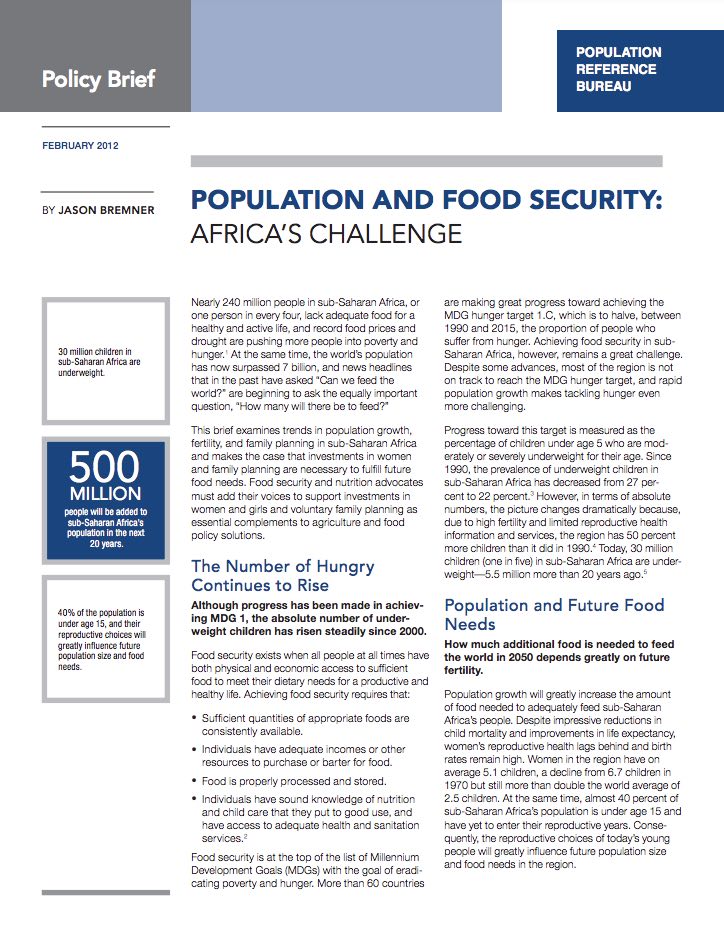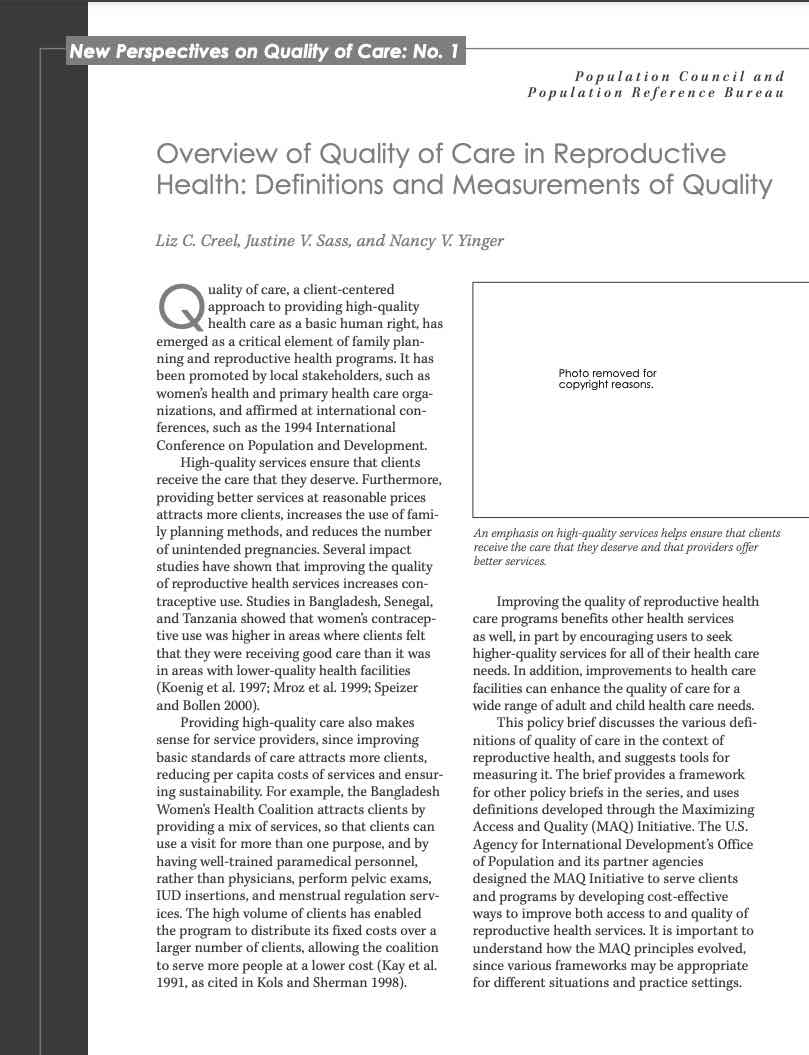U.S. Growing Bigger, Older, and More Diverse
(2004) Within the next few years, the U.S. population — currently estimated at 293 million — is expected to reach twice its 1950 level of 151 million.
(2004) Within the next few years, the U.S. population — currently estimated at 293 million — is expected to reach twice its 1950 level of 151 million.
(2005) With the spread of the Industrial Revolution in the 18th century, dramatic changes began to occur in the populations of industrializing countries. But do the changes that occurred in Western Europe and the United States have relevance for modern countries just entering the industrial age?
(2009) Mounting research shows that married people are healthier and live longer than unmarried people.

Traci L. Baird, President and CEO of EngenderHealth, remarks on the retirement of PRB President and CEO Jeffrey N. Jordan.

(2012) Nearly 240 million people in sub-Saharan Africa, or one person in every four, lack adequate food for a healthy and active life, and record food prices and drought are pushing more people into poverty and hunger.1 At the same time, the world’s population has now surpassed 7 billion, and news headlines that in the past have asked “Can we feed the world?” are beginning to ask the equally important question, “How many will there be to feed?”

(2002) Quality of care, a client-centered approach to providing high-quality health care as a basic human right, has emerged as a critical element of family planning and reproductive health programs.

The COVID pandemic impeded data collection for the United States’ premier survey of local communities. How can we measure a changing America?
(2010) There is an urgent need for stronger links between family planning/reproductive health and HIV policies, programs, and services.

(2012) Almost two of every three people in sub-Saharan Africa live in a rural area, relying principally on small-scale agriculture for their livelihood. Improving agriculture on small farms is critical to reducing hunger.